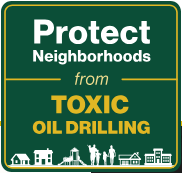Sponsor Kills Oil Pipeline Bill
April 13, 2014Another City in CO Considers a Fracking Ban
April 17, 2014The Medical Society of the State of New York passed a Resolution on Radon at their state-wide annual meeting yesterday, April 12, 2014 in Tarrytown, NY. It reads:
RESOLVED, That the Medical Society of the State of New York support policy that limits exposure to radon and its decay products which are known to cause primary lung cancer in non-smokers and to potentiate the likelihood of lung cancer in smokers; and be it further
RESOLVED, that the Medical Society of the State of New York support legislation the protects the public health by ensuring that New York State is committed to reducing sources of excess radon emission, and monitoring radon gas exposure levels to confirm that these radon gas levels do not exceed the recommended levels set by the Environmental Protection Agency.
In the past MSSNY has endorsed resolutions calling for moratoriums on gas drilling in tight shale deposits. This year the concern shifted to the radioactive elements found the gas itself. While the concern over radon is much broader then a concern over gas drilling, the physicians clearly had the radioactivity associated with gas drilling in tight sale deposits in mind when they passed their resolution. Some of the statements leading to the resolution proper make mention of the radon “inextricably linked” with the methane from the tight shale deposits, especially in the northeast. Others pointed to the potential exposure through the delivery systems, the decay products, and the shorter transit times.
Some examples:
WHEREAS, there is no safe exposure level of radon for public health protection
WHEREAS, Radon, which originates naturally in bedrock and shale, is inextricably combined with other natural gases sequestered in these subterranean reserves, and is therefore extracted in combination with natural gas
WHEREAS, due to geographic proximity of New York State to the Marcellus Shale region, there is significantly shorter transit time through local regional pipeline networks transporting radon-laced natural gas to NYS natural gas consumers thus resulting in the delivery of natural gas containing much higher concentrations of radon
As the threat of actual gas drilling subsides in the State, the public heath threats associated with the growing gas drilling infrastructure are now on the organization’s radar. Stay tuned.



